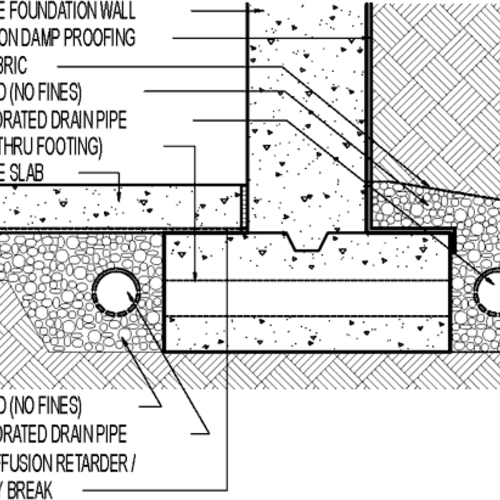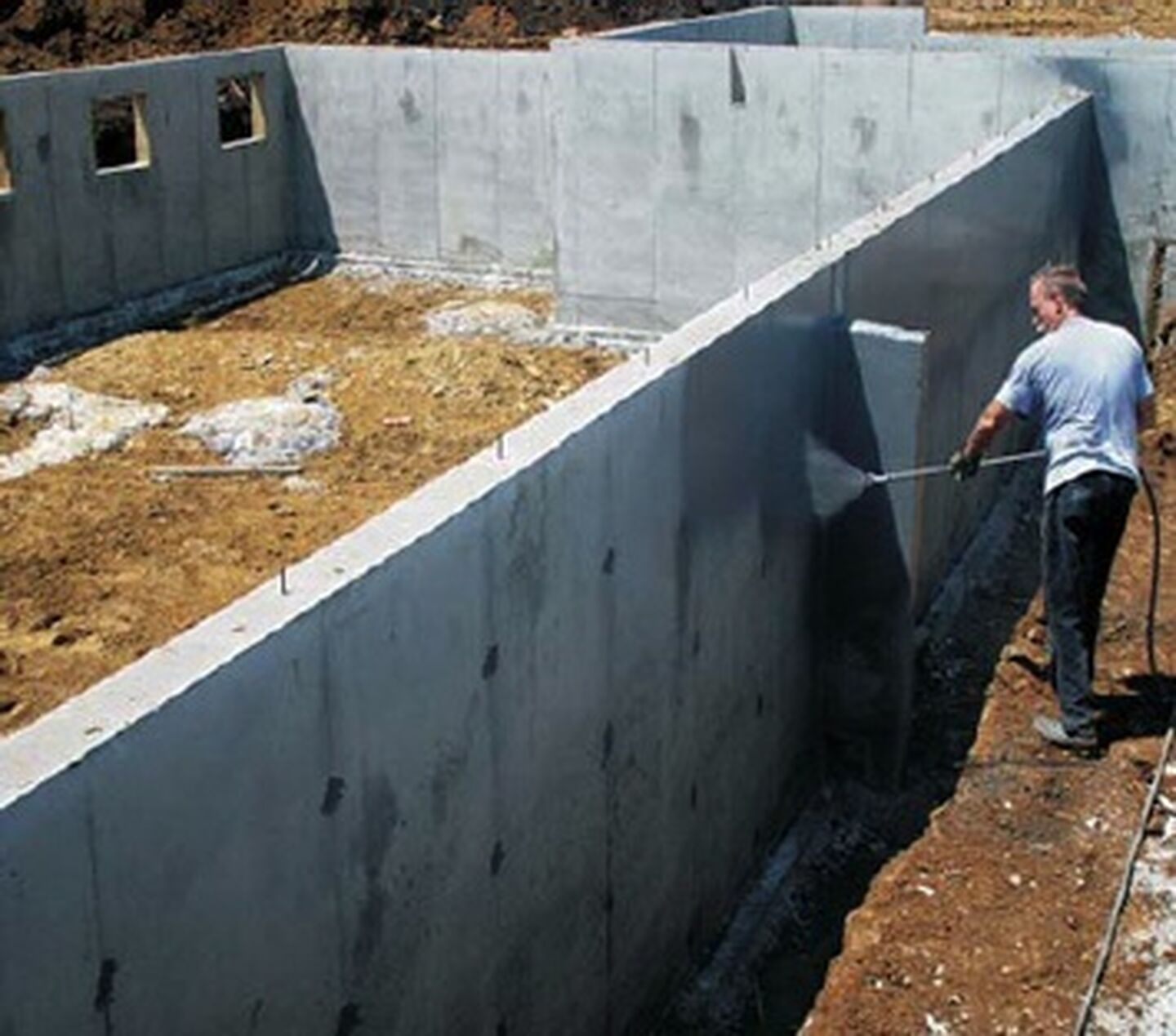Step-by-step guide for damp specialist newcastle to identify moisture issues early
Step-by-step guide for damp specialist newcastle to identify moisture issues early
Blog Article
Checking Out the Numerous Strategies and Solutions for Effective Damp Proofing
Moisture in structures positions considerable obstacles to both architectural honesty and interior air high quality. Numerous techniques and services have actually arised to battle this pervasive problem. From traditional damp-proof membrane layers to cutting-edge chemical therapies, each approach offers distinct benefits. Recognizing these alternatives is vital for reliable dampness control. Picking the appropriate remedy depends on particular building problems and requirements, prompting further exploration into the most reliable moist proofing techniques offered.
Comprehending the Sources Of Wetness
Although wetness can occur from various resources, comprehending these causes is important for reliable removal. Frequently, wetness stems from 3 primary resources: rising wet, permeating wet, and condensation. Increasing wet takes place when groundwater takes a trip up-wards via porous materials, such as brick or stone, frequently as a result of an absence of an effective barrier (damp removal newcastle). Permeating damp is commonly brought on by outside aspects, consisting of roofing leakages, defective gutters, or damaged walls, enabling water to penetrate a residential or commercial property. Condensation, on the other hand, arises from excess moisture in the air, usually worsened by poor ventilation and temperature distinctions, leading to water beads basing on surface areas. Identifying these underlying issues is important, as each kind of moisture calls for a tailored method for removal. Appropriate evaluation aids in determining one of the most efficient services, ultimately protecting the architectural integrity of a building and boosting indoor air high quality
Standard Damp-Proof Membranes

Chemical Damp-Proofing Solutions
Chemical damp-proofing services offer an ingenious approach to avoid wetness intrusion in buildings. These approaches generally involve the application of liquid chemicals that penetrate stonework and form an obstacle versus rising wet. Commonly used chemicals consist of silanes, siloxanes, and various other water-repellent agents that respond with surface products to produce a hydrophobic layer.The application process usually calls for exploration holes right into the wall surfaces, injecting the chemical option, and allowing it to cure. This method is particularly useful for older frameworks where conventional damp-proof membrane layers may be not practical. Additionally, chemical damp-proofing can be less turbulent and more cost-efficient than substantial restoration projects.While efficient, these services depend upon correct application and environmental problems for peak performance. Regular maintenance and surveillance are necessary to guarantee the durability of the damp-proofing therapy. On the whole, chemical damp-proofing represents a versatile alternative for securing buildings versus moisture-related damages
Tooth Cavity Wall Construction Techniques
Cavity wall building techniques use various advantages, particularly in moisture control and power performance. By including an air space in between two layers of stonework, these wall surfaces effectively reduce water access while boosting insulation. This mix not just protects frameworks from wetness but also adds to reduced power consumption.
Advantages of Cavity Walls
When considering reliable wet proofing techniques, the benefits of dental caries wall surfaces stick out prominently. Cavity wall surfaces contain two different layers, producing an air void that properly lowers moisture penetration. This style decreases the risk of wetness, as the outer wall surface functions as an obstacle against rainfall and water ingress. Furthermore, tooth cavity wall surfaces improve thermal insulation, which adds to power performance by reducing warm loss. They likewise give sound insulation, helping to produce a quieter indoor environment. The air void enables for ventilation, which assists in wetness control and minimizes the likelihood of mold and mildew growth. These benefits not just boost the total comfort of a structure yet likewise add to its long life and structural integrity.
Dampness Control Methods
Reliable moisture control techniques are vital in tooth cavity wall surface construction to assure long-lasting defense against moisture. One main method entails the unification of weep holes, which assist in water drainage from the dental caries, preventing accumulation. In addition, the usage of breathable membrane layers can help manage wetness levels while enabling caught vapor to escape. Correct placement of insulation is also critical, click here as it needs to not obstruct drainage paths. Guaranteeing that the external fallen leaves of the dental caries wall are built with water-resistant materials enhances overall resilience. Regular upkeep checks are crucial to recognize any blockages or damages early, safeguarding the structure's stability. Inevitably, a mix of these techniques forms a robust protection versus moisture breach in dental caries wall surfaces.
Insulation and Energy Performance
Insulation plays an important role in boosting power performance within dental caries wall surface building and construction. By incorporating shielding materials, these walls create a thermal obstacle that lessens warmth loss and lowers energy intake. Efficient insulation not just assists preserve a secure indoor temperature but also reduces the risk of wetness, as it prevents condensation within the wall dental caries. Various techniques, such as the usage of inflexible foam boards or mineral woollen, can be utilized to attain excellent insulation efficiency. Furthermore, appropriate setup is necessary to guarantee that voids and voids are lessened, which can otherwise endanger power performance. Inevitably, a well-insulated tooth cavity wall contributes substantially to general sustainability and reduces home heating and cooling expenses for property owners.
Outside Damp Proofing Methods
Outside wet proofing methods are necessary for protecting frameworks from wetness seepage. Two efficient strategies consist of the application of waterproof membranes and the setup of French drains. These solutions assist minimize water accumulation and maintain the honesty of structures.
Waterproof Membrane Layer Application
While various approaches exist for protecting against dampness ingress, the application of water resistant membrane layers remains a very efficient outside wet proofing technique. These membranes are typically made from products such as polyethylene, rubber, or modified asphalt, offering a robust barrier against water penetration. The installment procedure includes applying the membrane to the exterior surfaces of foundations or walls, making certain total coverage to prevent leaks. Proper attachment and sealing at joints are vital to making the most of performance. Water-proof membrane layers can be applied in various types, including liquid layers and sheet membranes, permitting adaptability based upon the certain demands of the structure. This approach not just shields structures from moisture however likewise boosts their longevity and structural honesty.
French Drainpipe Installment
One reliable technique for managing groundwater and protecting against moisture buildup around a structure's foundation is the setup of a French drainpipe. This drainage system contains a trench full of crushed rock and a perforated pipe that reroutes surface water away from the structure. Appropriate setup calls for mindful planning, guaranteeing that the drain slopes far from the framework to assist in excellent water flow. Furthermore, the area of the drain is crucial; it needs to be placed in locations prone to pooling or excess wetness. Regular maintenance, consisting of clearing particles from the gravel and guaranteeing the pipe stays unhampered, is important for long-term effectiveness. Eventually, a well-installed French drain can substantially minimize the risk of water-related issues in cellars and structures.
Interior Waterproofing Approaches
Interior waterproofing methods are essential for safeguarding a building's interior from dampness infiltration and prospective water damage. These techniques typically include the application of specific products and techniques designed to develop a moisture barrier within the framework. One common method is the usage of water resistant layers or sealants on walls and floors, which protect against wetness from penetrating surfaces.Additionally, setting up interior drainage systems, such as sump pumps, can effectively manage water buildup in cellars and creep rooms. An additional approach involves making use of vapor barriers, which are set up to inhibit wetness motion from the ground into living spaces.Moreover, dealing with any kind of splits or gaps in wall surfaces or structures with appropriate sealers assures a comprehensive protection against water breach. By executing these indoor waterproofing methods, homeowner can substantially decrease the danger of mold and mildew development, architectural damages, and other moisture-related issues. Appropriate execution of these strategies is crucial for lasting security and structure honesty.
Normal Upkeep and Evaluation Practices
Regular upkeep and examination methods are vital for guaranteeing the long-term efficiency of damp proofing solutions in any kind of structure. Regular checks enable building proprietors to recognize early indications of moisture invasion, such as peeling paint, mold and mildew development, and moldy smells. These signs can indicate underlying concerns that call for instant attention.Inspections need to be performed at least yearly, concentrating on prone locations like basements, creep rooms, and outside wall surfaces. During these analyses, homeowner ought to examine sealants, drainage systems, and ventilation to validate they operate correctly.Additionally, maintaining downspouts and rain gutters is essential, as clogged systems can cause water build-up near the foundation. Applying a regular upkeep schedule, along with timely fixings, can substantially expand the life-span of moist proofing actions and safeguard the structural honesty of the structure. Proactive procedures eventually add to the overall health and wellness of the living environment.
Often Asked Inquiries
The Length Of Time Does Damp Proofing Generally Last?
The period of damp proofing performance differs, generally lasting in between 20 to 50 years. Aspects such as application high quality, environmental conditions, and upkeep techniques considerably affect the long life of the damp proofing treatment.

Can I Damp Evidence My Home Myself?
The individual pondered the feasibility of do it yourself damp proofing. With appropriate study and the right products, it is feasible. They additionally identified the importance of expert support to assure resilient effectiveness and protect against future concerns.
What Are the Indications of Inefficient Damp Proofing?
Indicators of inefficient moist proofing include persistent musty smells, noticeable mold growth, peeling paint, wet spots on walls, and wood degeneration - mould removal newcastle. Property owners should resolve these concerns quickly to avoid additional damage and health and wellness problems
Does Damp Proofing Affect Indoor Air Quality?

Exactly How Much Does Specialist Damp Proofing Cost?
Specialist damp proofing prices differ significantly, generally varying from $1,000 to $5,000 relying on the home's size, the degree of the wet issue, and selected approaches. Each circumstance calls for a tailored analysis for accurate rates. Frequently, dampness originates from three key resources: increasing damp, penetrating damp, and condensation. When taking into consideration effective moist proofing approaches, the advantages of cavity wall surfaces stand out prominently. Outside damp proofing approaches are important for safeguarding structures from moisture seepage. While numerous approaches exist for avoiding wetness ingress, the application of waterproof membranes stays a highly effective external damp proofing method. Signs of inefficient damp proofing consist of relentless moldy odors, visible mold and mildew growth, peeling off paint, wet patches on walls, and timber degeneration.
Report this page